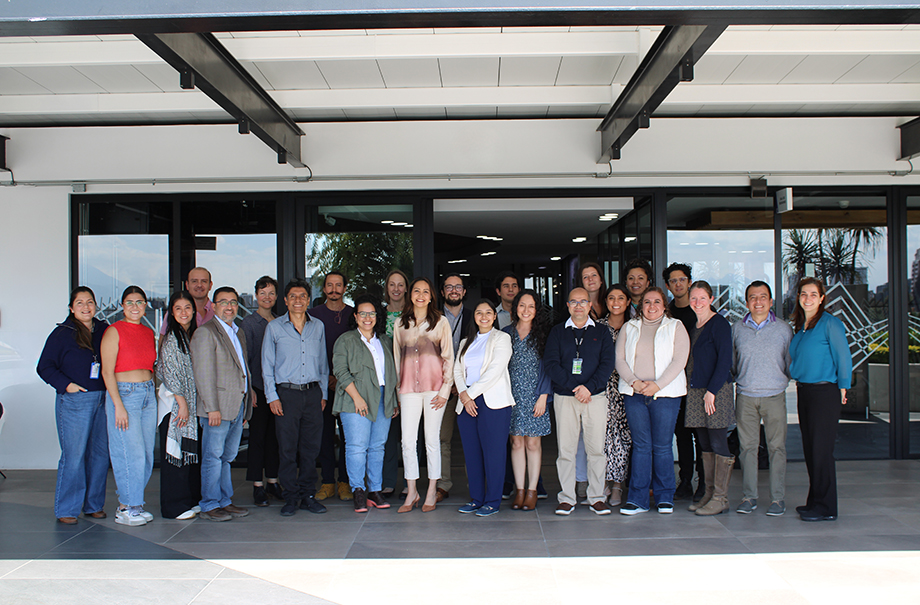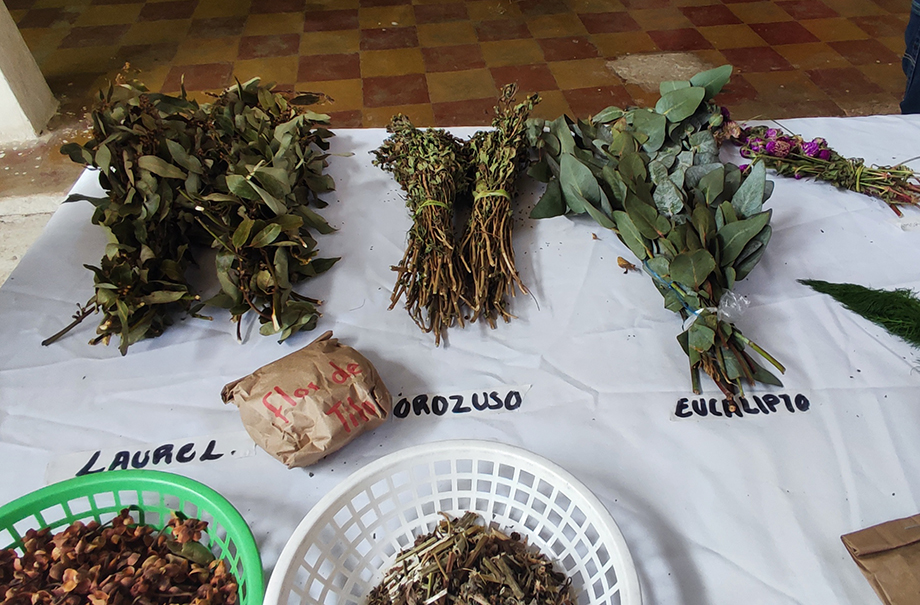
ASPIRE team assembles at UVG in January 2024
Date:
March 1, 2024
Date:
March 1, 2024
By: Janine Sazinsky
In the fourth week of January, the ASPIRE Project team and collaborators, including UVG, MIT, and AGEXPORT members, accompanied by representatives from ASPIRE’s donor agency, the United States Agency for International Development (USAID), convened in Guatemala City for a week filled with strategic planning and on-site engagements and participated in other events like the launch of UVG’s entrepreneurship center, CREA, and UVG’s annual inaugural address to mark the official start of the academic year.
The group of visitors arrived on January 24th, and spent two days immersed in an After Action Review (AAR), reflecting on developments from the previous six months, and planning ahead, taking advantage of learning opportunities and developments to date. These valuable meetings, rich in insights and cross-collaborative ideas, underscored the important synergy made possible through in-person collaborations.

Venturing beyond the meeting rooms, the team, including members from USAID, visited collaborative research project sites. They traveled to San Andrés Semetabaj to explore the Semetabaj archaeological site, the ethno-botanical garden on the grounds, and the nearby San Andrés Semetabaj Ecomuseum. Led by Ernesto Arredondo Leiva (Ph.D., Archaeology), Researcher at the Center of Archaeological and Anthropological Research (CIAA) at UVG, and Director of the Semetabaj Archaeological Project, with participating Altiplano student Bryan Perez and site staff Lili Cana and Amelia Lopez, the group witnessed first-hand the fusion of academic, private, and industrial efforts to preserve and showcase this culturally significant area. One highlight was observing up-close organic soil production at the site, which epitomizes the project’s commitment to sustainable practices. Visiting with the group was Celia Laskowski of USAID, who after experiencing the site visits, said, “It is clear that the ASPIRE project has already garnered immense excitement and buy-in from local partners. We kept hearing from project participants that their input was not only asked for but actually implemented. This type of inclusivity throughout project activities supports local ownership and long-term sustainability.”

Image 1: The site produces healthy organic soil. Here, Amelia Lopez shows the ASPIRE team soil-in-progress, and the worms supporting the work.

Image 2: Remnants of red vessels are seen throughout the grounds.
The group also traveled to Chaquijyá to meet with community organizers from the Ija’tz and INNOC cooperative agricultural organizations collaborating with ASPIRE on essential oil research. Although the Ija’tz and INNOC groups have met UVG students participating in the class research projects, this was the first time they met with other ASPIRE staff from the U.S. Members from the local groups showed their visitors how and where their products and seeds are grown, cultivated, and stored, and offered insights into their personal experiences and hopes for the project. Both cooperatives apply ancestral knowledge and methods to cultivate their products, all while welcoming and supporting the development of a very modern, mobile, laboratory that, in collaboration with academia and industry, will help them sell their products and improve their community.


Images 1 & 2: Display of the seeds, plants, and their storage containers, produced and used by the Ija’tz and INNOC groups, in discussion with USAID officials. Products need tending to all year, even during Guatemala’s dry season, as witnessed during the visit.
A later visit to Jardines de Provenza, an AGEXPORT associate and essential oils producer near Antigua, Guatemala, provided a glimpse into Guatemala’s vibrant agricultural landscape. The company has been partnering with ASPIRE in the research of essential oil extraction methods.
Gerardo Rosado, AGEXPORT’s ASPIRE Coordinator, who participated in the visits and meetings, noted that at this point in the project, there is “Greater clarity, both from the private and academic sectors, that by working hand in hand on research and innovation challenges, goals that can have a great impact for the country can be achieved, and that both sectors complement each other with a purpose, which is to achieve continuous improvement.”
During the week, AGEXPORT hosted a meeting of the project’s Advisory Board. This was an important way for our collaborators in industry, education, and local strategic partners to review the progress and learn about achievements made in research projects related to various value chains, including cardamom, avocado, sustainable tourism, essential oils, cocoa, peas and vegetables, among others. Both UVG and AGEXPORT shared progress in different research and innovation projects. Following this meeting, AGEXPORT hosted a panel titled “Experiences in Co-Creation,” in which business sector partners who collaborate with ASPIRE, spoke about the importance of strong ties between the business, academic, and public sectors. Elizabeth Saloj, ASPIRE collaborator and representative of the Ija´tz group, commented: “This project brings us closer to science, technology, and entrepreneurship, which provides us with tools for innovation and motivates us as producers, since we hope to be able to generate jobs in the near future.” Read more about the panel at AGEXPORT Hoy.
Back on campus, the group joined the university in two major academic milestones: convening with UVG students, faculty, and staff for the University’s 2024 inaugural lecture, “Designing the future,” given by Massachusetts Institute of Technology professor John Oschendorf. They also took part in the launch of “El Camino del Emprendedor de UVG CREA 2024,” celebrating a home for innovation and entrepreneurship at UVG. Despite their busy schedules, many students who have already worked with and benefitted from CREA and its programs participated in a poster session to share their inspiring stories and excitement for the new entrepreneurial path at UVG.

El Camino del Emprendedor de UVG CREA 2024 Image: Diego López, José Paiz, and Valeria Sierra show off their CREA Emprende supported project Biopower. In this original research with the Chemical Engineering Department, the group investigates alternative ways to produce and get biodiesel to market.
El Camino del Emprendedor de UVG CREA 2024 Image: Diego López, José Paiz, and Valeria Sierra show off their CREA Emprende supported project Biopower. In this original research with the Chemical Engineering Department, the group investigates alternative ways to produce and get biodiesel to market.
The week concluded with a Lean Research Training session attended by UVG staff and faculty from the Central, Altiplano, and South campuses, highlighting the project’s commitment to capacity building.
In all, the group’s experience was invaluable. “In-person visits like this one allow us to experience first-hand the important work that ASPIRE is doing. It’s one thing to read about these activities, but actually being able to interact with ASPIRE participants allows us to both feel their enthusiasm as well as better understand any challenges they might be facing and then co-create strategies to overcome those challenges,” added Ms. Laskowski (USAID).
The ASPIRE Project gatherings are valuable opportunities for team members across different areas to come together, enabling lasting impacts through learning and collaboration. We look forward to the next!
About ASPIRE
The ASPIRE Project is a five-year, $15 million project funded by USAID and implemented by the Massachusetts Institute of Technology (MIT), Universidad del Valle de Guatemala (UVG), and the Guatemalan Exporters Association (AGEXPORT), with the goal of creating a world-class, replicable model for how Latin American universities, in collaboration with the private sector, government, and local communities, can respond to local and regional development needs. The project implements a collaborative approach to research, teaching, innovation, entrepreneurship, and tech transfer, based on the combination of local assets and knowledge with MIT’s experience in the innovation ecosystem.
